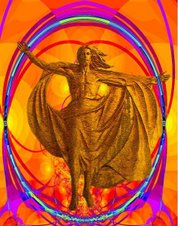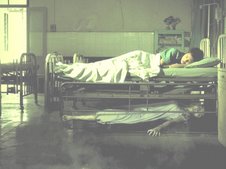Shirley Temple
From Wikipedia, the free encyclopedia
Jump to: navigation, search
For the beverage, see Shirley Temple (cocktail).
Shirley Jane Temple
Sixteen-year-old Temple in 1944 in Ottawa, Ontario, Canada, at a ceremony to raise money for Canadian Victory bonds.
Born Shirley Jane Temple[note 1]
April 23, 1928 (age 84)
Santa Monica, California
Residence Woodside, California
Other names Shirley Jane Temple
Education Tutors; Private high school
Alma mater Westlake School for Girls (1940-1945)
Occupation Film actress
(1932-1950)
TV actress/entertainer
(1958-1965)
Public servant
(1969-1992)
Years active 1932-1950 as actress
Known for Juvenile film roles
Notable work(s) Bright Eyes; The Little Colonel; Curly Top; Wee Willie Winkie; Heidi; The Little Princess; Since You Went Away; The Bachelor and the Bobby-Soxer; Fort Apache; Shirley Temple's Storybook; Child Star; et. al. Often confused for playing in Annie although she was not a part of that production.
Home town Los Angeles, California
Television Shirley Temple's Storybook (1958-1958); The Shirley Temple Show (1960-1961)
Political party Republican
Religion Methodist
Spouse John Agar
(m. 1945-1950; divorced)
Charles Alden Black
(m. 1950-2005; his death)
Children Linda Susan (Linda Susan Agar)
Charlie Jr. (Barton Sunday)
Lori Alden Black
Parents George Francis Temple,
Gertrude (nee Krieger) Temple
Relatives Brothers
John Stanley,
George Francis, Jr.
Awards Academy Award
Kennedy Center Honors
Screen Actors Guild Life Achievement Award
Website
www.shirleytemple.com
Shirley Jane Temple (born April 23, 1928), later Shirley Temple Black, is an American film and television actress, singer, dancer, autobiographer, and former U.S. Ambassador to Ghana and Czechoslovakia. She began her film career in 1932 at the age of three, and in 1934, found international fame in Bright Eyes, a feature film designed specifically for her talents. She received a special Juvenile Academy Award in February 1935, and film hits such as Curly Top and Heidi followed year after year during the mid-to-late 1930s. Licensed merchandise that capitalized on her wholesome image included dolls, dishes, and clothing. Her box office popularity waned as she reached adolescence, and she left the film industry at the age of 12 to attend high school[clarification needed]. She appeared in a few films of varying quality in her mid-to-late teens, and retired completely from films in 1950 at the age of 22. She was the top box-office draw four years in a row (1935–38) in a Motion Picture Herald poll.[1][2]
Temple returned to show business in 1958 with a two-season television anthology series of fairy tale adaptations. She made guest appearances on various television shows in the early 1960s and filmed a sitcom pilot that was never released. She sat on the boards of many corporations and organizations including The Walt Disney Company, Del Monte Foods, and the National Wildlife Federation. In 1967, she ran unsuccessfully for United States Congress, and was appointed United States Ambassador to Ghana in 1974 and to Czechoslovakia in 1989. In 1988, she published her autobiography, Child Star. Temple is the recipient of many awards and honors including Kennedy Center Honors and a Screen Actors Guild Life Achievement Award.
She is No. 18 on the American Film Institute's list of the greatest female American screen legends of all time, making her the highest-ranked living person on the list.
Contents
1 Early years
2 Fox films
3 Twentieth Century Fox
3.1 1935–1937
3.2 1938–1940
4 Last films and retirement
5 Temple-related merchandise and endorsements
6 Marriages and children
7 Television
8 Life after Hollywood
8.1 Political ambitions
8.2 Breast cancer
8.3 Corporation commitments
9 Awards and honors
10 Filmography
11 References
11.1 Notes
11.2 Footnotes
11.3 Works cited
11.4 Bibliography
12 External links
Early years
Shirley Jane Temple was born on April 23, 1928 in Santa Monica, California. She is the daughter of Gertrude Amelia Temple (née Krieger), a homemaker, and George Francis Temple, a bank employee. The family was of German, Dutch, and English ancestry.[3][4] She had two brothers, George Francis, Jr. and John Stanley.[4][5][6] Mrs. Temple encouraged her infant daughter's singing, dancing, and acting talents, and in September 1931 enrolled her in Meglin's Dance School in Los Angeles, California.[7][8][9] About this time, she began styling Shirley's hair in ringlets similar to those of silent film star Mary Pickford.[10]
In January 1932, Temple was signed by Educational Pictures following a talent search at the dance school. She appeared in a series of one-reelers called Baby Burlesks,[11][12][13][14] and a series of two-reelers called Frolics of Youth playing Mary Lou Rogers, a youngster in a contemporary suburban family.[15] To underwrite production costs at Educational, Temple and her child co-stars modeled for breakfast cereals and other products.[16][17] She was loaned to Tower Productions for a small role in her first feature film Red-Haired Alibi in 1932,[18][19] and, in 1933, to Universal, Paramount, and Warner Bros. for various bit parts.[20][21]
Fox films
Temple's hand and foot prints at Grauman's Chinese Theater
Educational Pictures declared bankruptcy in 1933 and Temple signed with Fox Films in February 1934.[22][23] She appeared in bit parts and was loaned to Paramount and Warner Bros for bit parts.[24] In April 1934, Stand Up and Cheer! became Temple's breakthrough film. Her charm was evident to Fox heads and she was promoted well before the film's release. Within months, she became the symbol of wholesome family entertainment.[25] Her salary was raised to $1,250 a week, and her mother's to $150 as coach and hairdresser.[26] In June, her success continued with a loan-out to Paramount for Little Miss Marker.[27][28]
On December 28, 1934, Bright Eyes was released. It was the first feature film crafted specifically for Shirley's talents and the first in which her name appeared above the title.[29][30] Her signature song "On the Good Ship Lollipop" was introduced in the film and sold 500,000 sheet music copies. The film demonstrated Temple's ability to portray a multi-dimensional character and established a formula for her future roles as a lovable, parentless waif whose charm and sweetness mellow gruff older men.[31] In February 1935, Temple became the first child star to be honored with a miniature Juvenile Oscar for her 1934 film accomplishments,[32][33][34][note 2] and added her foot and hand prints to the forecourt at Grauman's Chinese Theatre a month later.[35]
Twentieth Century Fox
Fox Films merged with Twentieth Century Pictures to become Twentieth Century-Fox in 1934. Producer and studio head Darryl F. Zanuck focused his attention and resources upon cultivating Temple's superstar status. With four successful films to her credit, she was the studio's greatest asset. Nineteen writers known as the Shirley Temple Story Development team created 11 original stories and some adaptations of the classics for her.[36][note 3]
Biographer Anne Edwards writes about the tone and tenor of Temple films under Zanuck, "This was mid-Depression, and schemes proliferated for the care of the needy and the regeneration of the fallen. But they all required endless paperwork and demeaning, hours-long queues, at the end of which an exhausted, nettled social worker dealt with each person as a faceless number. Shirley offered a natural solution: to open one's heart."[37] Edwards points out that the characters created for Temple would change the lives of the cold, the hardened, and even the criminal with positive results.[37] Edwards quotes a nameless filmographer: "She assaults, penetrates, and opens [the flinty characters] making it possible for them to give of themselves. All of this returns upon her at times forcing her into situations where she must decide who needs her most. It is her agony, her Calvary, and it brings her to her most despairing moments ... Shirley's capacity for love ... was indiscriminate, extending to pinched misers or to common hobos, it was a social, even a political, force on a par with democracy or the Constitution."[38] Temple films were seen as generating hope and optimism, and President Franklin D. Roosevelt said, "It is a splendid thing that for just fifteen cents an American can go to a movie and look at the smiling face of a baby and forget his troubles."[39][note 4]
Photograph of Eleanor Roosevelt seated with Temple immediately to her left. The two are looking at each other apparently engaged in conversation.
First Lady Eleanor Roosevelt and Shirley Temple in July 1938
Most films Temple starred in were cheaply made at $200,000 or $300,000 per picture and were comedy-dramas with songs and dances added, sentimental and melodramatic situations aplenty, and little in the way of production values. Her film titles are a clue to the way she was marketed—Curly Top and Dimples, and her "little" pictures such as The Little Colonel and The Littlest Rebel. Temple often played a fixer-upper, a precocious Cupid, or the good fairy in these films, reuniting her estranged parents or smoothing out the wrinkles in the romances of young couples. She was very often motherless, sometimes fatherless, and sometimes an orphan confined to a dreary asylum.[40] Elements of the traditional fairy tale were woven into her films: wholesome goodness triumphing over meanness and evil, for example, or wealth over poverty, marriage over divorce, or a booming economy over a depressed one.[41] As Temple matured into a pre-adolescent, the formula was altered slightly to encourage her naturalness, naïveté, and tomboyishness to come forth and shine while her infant innocence, which had served her well at six but was inappropriate for her tweens (or later childhood years), was toned down.[40]
1935–1937
At Zanuck's request, Temple's parents agreed to four films a year from their daughter (rather than the three they wished), and the child star's contract was reworked with bonuses to sweeten the deal. A succession of films followed: The Little Colonel, Our Little Girl, Curly Top (with the signature song "Animal Crackers in My Soup"), and The Littlest Rebel in 1935. Curly Top and The Littlest Rebel were named to Variety's list of top box office draws for 1935.[42] In 1936, Captain January, Poor Little Rich Girl, Dimples,[note 5] and Stowaway were released.
Based on Temple's many screen successes, Zanuck increased budgets and production values for her films. In 1937, John Ford was hired to direct the sepia-toned Wee Willie Winkie (Temple's own favorite) and an A-list cast was signed that included Victor McLaglen, C. Aubrey Smith, and Cesar Romero.[43][44] The film was a critical and commercial hit,[43] but British film critic Graham Greene muddied the waters in October 1937 when he wrote in a British magazine that Temple was a "complete totsy" and accused her of being too nubile for a nine-year-old:
Her admirers—middle-aged men and clergymen—respond to her dubious coquetry, to the sight of her well-shaped and desirable little body, packed with enormous vitality, only because the safety curtain of story and dialogue drops between their intelligence and their desire.[45]
Temple and Twentieth Century-Fox sued for libel and won. The settlement remained in trust for Temple in an English bank until she turned twenty-one, when it was donated to charity and used to build a youth center in England.[46][47]
The only other Temple film released in 1937 was Heidi, which, according to Edwards, was a story suited to Temple's "slightly more mature personality".[46] Edwards points out that Temple's hair had darkened and her ringlets brushed back into curls. Temple's theatrical instincts had sharpened, Edwards observes, and she suggested the Dutch song and dance dream sequence.[48] After minor disagreements about the dance steps with the other children in the scene, director Allan Dwan had badges made reading 'Shirley Temple Police'. Every child was issued one after swearing allegiance and obedience to Temple. Shirley wore one reading 'Chief'.[49]
1938–1940
Temple in The Little Princess
In 1938, Rebecca of Sunnybrook Farm, Little Miss Broadway, and Just Around the Corner were released. The latter two were panned by the critics, and Corner was the first Temple film to show a slump in ticket sales.[50] The following year, Zanuck secured the rights to the children's novel, A Little Princess, believing the book would be an ideal vehicle for Temple. He budgeted the film at $1.5 million (twice the amount of Corner) and chose it to be her first Technicolor feature. The Little Princess was a 1939 critical and commercial success with Temple's acting at its peak. Convinced Temple would successfully move from child star to teenage actress, Zanuck declined a substantial offer from MGM to star Temple as Dorothy in The Wizard of Oz and cast her instead in Susannah of the Mounties, her last money-maker for Twentieth Century-Fox.[51][52] The film was lackluster and dropped Temple from number one box-office favorite in 1938 to number five in 1939.[53]
In 1940, Temple starred in two consecutive flops at Twentieth Century-Fox, The Blue Bird and Young People[54][55] Temple's parents bought up the remainder of her contract and sent her at the age of 12 to Westlake School for Girls, an exclusive country day school in Los Angeles.[56] At the studio, Temple's bungalow was renovated, all traces of her tenure expunged, and the building reassigned as an office complex.[55]
Last films and retirement
Within a year of her departure from Twentieth Century-Fox,[note 6] MGM signed Temple for her comeback, and made plans to team her with Judy Garland and Mickey Rooney first for the Andy Hardy series, and then when that idea was quickly abandoned, teaming Temple with Garland and Rooney for the musical Babes on Broadway. However, realizing that both Garland and Rooney could easily upstage Temple, MGM replaced Shirley in that film with Virginia Weidler. As a result, Temple's only film for Metro became Kathleen in 1941, a story about an unhappy teenager. The film was not a success and her MGM contract was canceled after mutual consent. Miss Annie Rooney followed for United Artists in 1942, but it too was unsuccessful.[note 7] The actress retired for almost two years from films, throwing herself into school life and activities.[57]
In 1944, David O. Selznick signed Temple to a personal four-year contract. She appeared in two wartime hits for him: Since You Went Away and I'll Be Seeing You. Selznick however became involved with Jennifer Jones and lost interest in developing Temple's career. She was loaned to other studios with Kiss and Tell, The Bachelor and the Bobby-Soxer,[note 8] and Fort Apache being her few good films at the time.[58]
According to biographer Robert Windeler, her 1947–49 films neither made nor lost money, but "had a cheapie B look about them and indifferent performances from her".[59] Selznick suggested she move abroad, gain maturity as an actress, and even change her name. She had been typecast, he warned her, and her career was in perilous straits.[59][60] After auditioning for and losing the role of Peter Pan on the Broadway stage in August 1950,[61] Temple took stock, admitted her recent movies had been poor fare, and announced her official retirement from films on December 16, 1950.[59][62]
Temple-related merchandise and endorsements
Temple leaving the White House offices with her mother and her bodyguard Grif, 1938
Many Temple-inspired products were manufactured and released during the 1930s. Ideal Toy and Novelty Company in New York City negotiated a license for dolls with the company's first doll wearing the polka-dot dress from Stand Up and Cheer!. Shirley Temple dolls realized $45 million in sales before 1941.[63] A mug, a pitcher, and a cereal bowl in cobalt blue with a decal of Temple were given away as a premium with Wheaties.
Successfully-selling Temple items included a line of girls' dresses and accessories, soap, dishes, cutout books, sheet music, mirrors, paper tablets, and numerous other items. Before 1935 ended, Temple's income from licensed merchandise royalties would exceed $100,000, doubling her income from her movies. In 1936, her income would top $200,000 from royalties. She endorsed Postal Telegraph, Sperry Drifted Snow Flour, the Grunow Teledial radio, Quaker Puffed Wheat,[63] General Electric, and Packard automobiles.[31][note 9]
Marriages and children
In 1943, 15-year-old Temple met John George Agar (1921–2002), an Army Air Corps sergeant, physical training instructor, and a member of a Chicago meat-packing family.[64][65] On September 19, 1945, when Temple was 17 years old, they were married before 500 guests in an Episcopal ceremony at Wilshire Methodist Church.[23][66][67] On January 30, 1948, Temple gave birth to their daughter, Linda Susan.[23][68][69] Agar became a professional actor and the couple made two films together: Fort Apache (1948, RKO) and Adventure in Baltimore (1949, RKO).[69] The marriage became troubled,[69][70] and Temple divorced Agar on December 5, 1949.[31][69] She received custody of their daughter and the restoration of her maiden name.[69][71][72] The divorce was finalized on December 5, 1950.
In January 1950, Temple had met Charles Alden Black, a WWII United States Navy Silver Star hero and Assistant to the President of the Hawaiian Pineapple Company.[73][74] Conservative and patrician, he was the son of James B. Black, the president and later chairman of Pacific Gas and Electric, and reputedly one of the richest young men in California.[74] Temple and Black were married in his parents' Del Monte, California home on December 16, 1950, before a small assembly of family and friends.[23][74][75]
The family relocated to Washington, D.C. when Black was recalled to the Navy at the outbreak of the Korean War.[76] Temple gave birth to their son, Charles Alden Black, Jr., in Washington, D.C. on April 28, 1952.[23][77][78] Following the war's end and Black's discharge from the Navy, the family returned to California in May 1953. Black managed television station KABC-TV in Los Angeles, and Temple became a homemaker. Their daughter Lori was born on April 9, 1954.[23] In September 1954, Black became director of business operations for the Stanford Research Institute and the family moved to Atherton, California.[79] The couple remained married for 54 years until his death on August 4, 2005, at home in Woodside, California of complications from a bone marrow disease.[80]
Television
Between January and December 1958 Temple hosted and narrated a successful NBC television anthology series of fairy tale adaptations called Shirley Temple's Storybook. Temple acted in three of the sixteen hour-long episodes, and her children made their acting debuts in the Christmas episode, "Mother Goose".[81][82] The series was popular but faced some problems. The show lacked the special effects necessary for fairy tale dramatizations, sets were amateurish, and episodes were telecast in no regular time-slot, making it difficult to generate a following.[83] The show was reworked and released in color in September 1960 in a regular time-slot as The Shirley Temple Show (also known as Shirley Temple Theater).[84][85] It faced stiff competition from a popular western and a Disney program however, and was canceled at season's end in September 1961.[86]
Temple continued to work on television, making guest appearances on The Red Skelton Show, Sing Along with Mitch, and other shows.[84] In January 1965, she portrayed a social worker in a sitcom pilot called Go Fight City Hall that was never released.[87] In 1999, she hosted the AFI's 100 Years... 100 Stars awards show on CBS, and, in 2001, served as a consultant on an ABC-TV production of her autobiography, Child Star: The Shirley Temple Story.[citation needed]
Motivated by the popularity of Storybook and television broadcasts of Temple's films, the Ideal Toy Company released a new version of the Shirley Temple doll and Random House published three fairy tale anthologies under Temple's name. Three hundred thousand dolls were sold within six months and 225,000 books between October and December 1958. Other merchandise included handbags and hats, coloring books, a toy theater, and a recreation of the Baby,Take a Bow polka-dot dress.[88]
Life after Hollywood
Head shot of Temple as an adult. She is smiling and wearing a top and beaded necklace, both red and black.
Shirley Temple Black, United States Ambassador to Czechoslovakia (1990)
Political ambitions
Following her venture into television, Temple became active in the Republican Party in California, where, in 1967, she ran unsuccessfully for the United States House of Representatives in a special election to fill a vacant seat.[89][90] She ran as a conservative and lost to liberal Republican Pete McCloskey, a staunch opponent of the Vietnam War.[91]
She was appointed Representative to the 24th United Nations General Assembly by President Richard M. Nixon (September – December 1969),[92][93] and was appointed United States Ambassador to Ghana (December 6, 1974 – July 13, 1976) by President Gerald R. Ford.[94] She was appointed first female Chief of Protocol of the United States (July 1, 1976 – January 21, 1977), and was in charge of arrangements for President Jimmy Carter's inauguration and inaugural ball.[94][95] She served as the United States Ambassador to Czechoslovakia (August 23, 1989 – July 12, 1992), having been appointed by President George H. W. Bush.[31]
Breast cancer
In the autumn of 1972, Temple was diagnosed with breast cancer. The tumor was removed, and a modified radical mastectomy performed. Following the operation, she announced it to the world via radio, television, and a February 1973 article for the magazine McCall's. In doing so, she became one of the first prominent women to speak openly about breast cancer.[citation needed]
Corporation commitments
Temple has served on numerous boards of directors of large enterprises and organizations including The Walt Disney Company, Del Monte, Bank of America, the Bank of California, BANCAL Tri-State, Fireman's Fund Insurance, the United States Commission for UNESCO, the United Nations Association, and the National Wildlife Federation.[96]
Awards and honors
Temple is the recipient of many awards and honors including a special Juvenile Academy Award,[23] the Life Achievement Award from the American Center of Films for Children,[94] the National Board of Review Career Achievement Award,[97] Kennedy Center Honors,[98][99] and the Screen Actors Guild Life Achievement Award.[100] On September 11, 2002, a life-size bronze statue of the child Temple by sculptor Nijel Binns was erected on the Fox Studio lot.[101]
On March 14, 1935, Temple left her footprints and handprints in the wet cement at the forecourt of Grauman's Chinese Theatre in Hollywood.
Filmography
Main article: Shirley Temple filmography, features and short subjects
http://en.wikipedia.org/wiki/Shirley_Temple





No comments:
Post a Comment